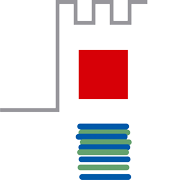A brief history of Castle Trakošćan
Trakošćan was built in the late 13th century as part of the defence fortification network of northwestern Croatia. It was a small fortress serving as an observation post overlooking the road from Ptuj towards the Bednja valley.
There are two stories about the origin of Trakošćan: according to the first one name derives from Trakian Citadel (Arx Thracorum) which has existed during the Roman Empire, while other sources indicate that Trakošćan is in connection with German knights Drachenstein who were here in the early Middle Age.
Trakošćan was mentioned for the first time in 1334. The first known owners of Trakošćan were the Counts of Celjski, who also ruled over the entire Zagorje principality. When the family died out, Trakošćan shared the fate of their other estates and towns, passing from one owner to another and breaking up into smaller estates and holdings. Trakošćan first passed into the possession of Jan Vitovec and then it was taken over by Ivaniš Korvin who presented it to his deputy Ban (vice-roy) Ivan Gyulay. His family held Trakošćan for three generations and then estate was taken over by Royal Treasury.
The king granted the estate to Cardinal and Croatian Ban Juraj Drašković for his personal use and as heraditary property. Thus, in 1584, the Drašković family gained possession of Trakošćan.
During the 18th century the castel was largely neglected and in the first half of the 19th century the family again took interest in the castle, but now the castle reflected the spirit of the new age, a romantic return to nature and family traditions. At this time the castle was restored and turned into a residential dwelling modelled on German romantic castles. The same romantic features can be observed in the restored park and artificial lake.
Members of family Drašković left the castle in 1944 and the castle was then nationalised. In 1953 museum was established with it’s permenant display. Museum is owned by Republic of Croatia.
